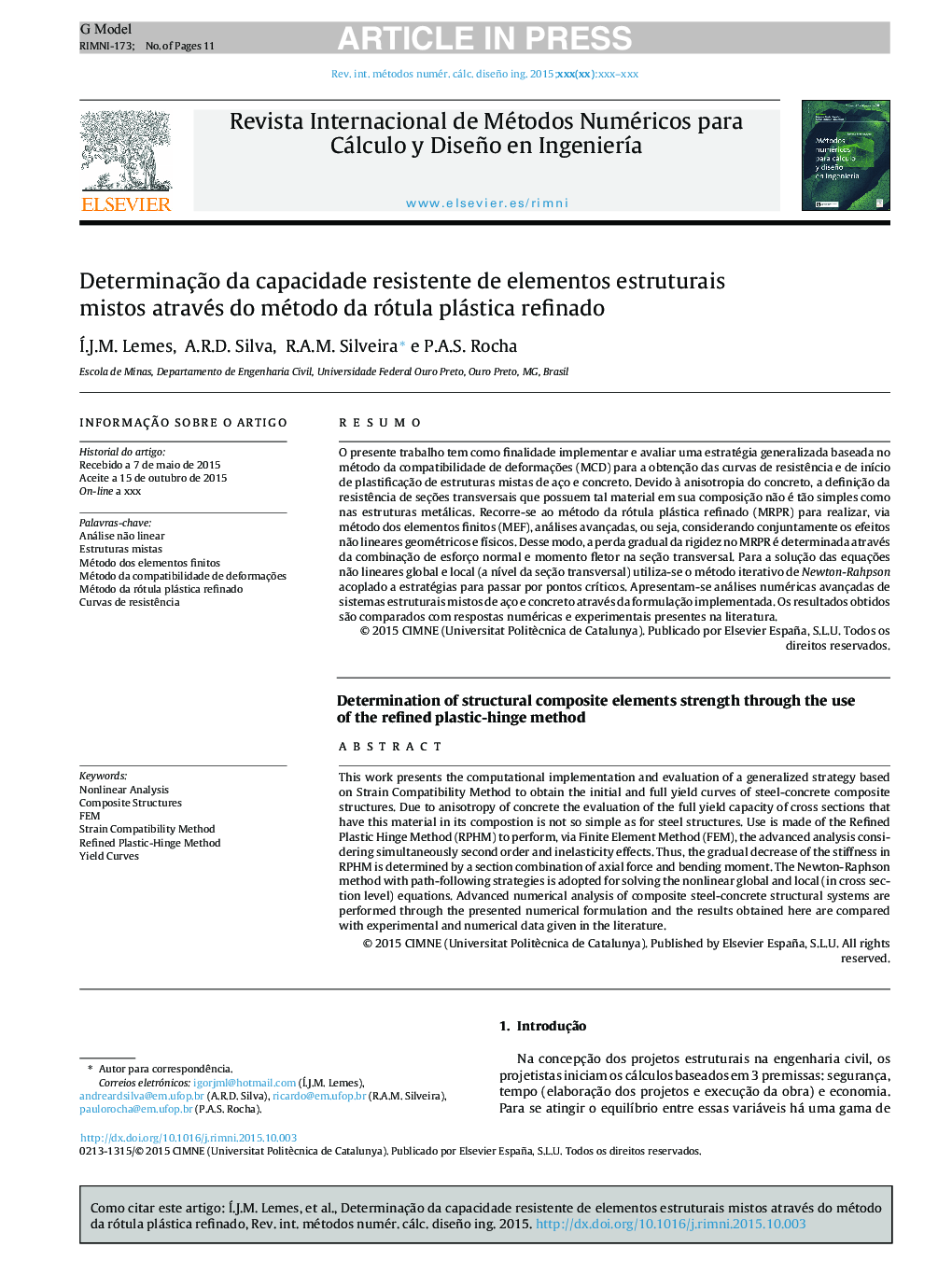| Article ID | Journal | Published Year | Pages | File Type |
|---|---|---|---|---|
| 8050745 | Revista Internacional de Métodos Numéricos para Cálculo y Diseño en Ingeniería | 2017 | 11 Pages |
Abstract
This work presents the computational implementation and evaluation of a generalized strategy based on Strain Compatibility Method to obtain the initial and full yield curves of steelâconcrete composite structures. Due to anisotropy of concrete the evaluation of the full yield capacity of cross sections that have this material in its compostion is not so simple as for steel structures. Use is made of the Refined Plastic Hinge Method (RPHM) to perform, via Finite Element Method (FEM), the advanced analysis considering simultaneously second order and inelasticity effects. Thus, the gradual decrease of the stiffness in RPHM is determined by a section combination of axial force and bending moment. The NewtonâRaphson method with pathâfollowing strategies is adopted for solving the nonlinear global and local (in cross section level) equations. Advanced numerical analysis of composite steelâconcrete structural systems are performed through the presented numerical formulation and the results obtained here are compared with experimental and numerical data given in the literature.
Related Topics
Physical Sciences and Engineering
Engineering
Computational Mechanics
Authors
Í.J.M. Lemes, A.R.D. Silva, R.A.M. Silveira, P.A.S. Rocha,
